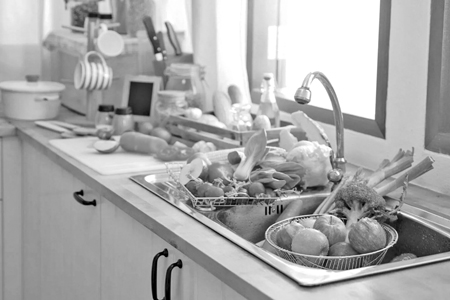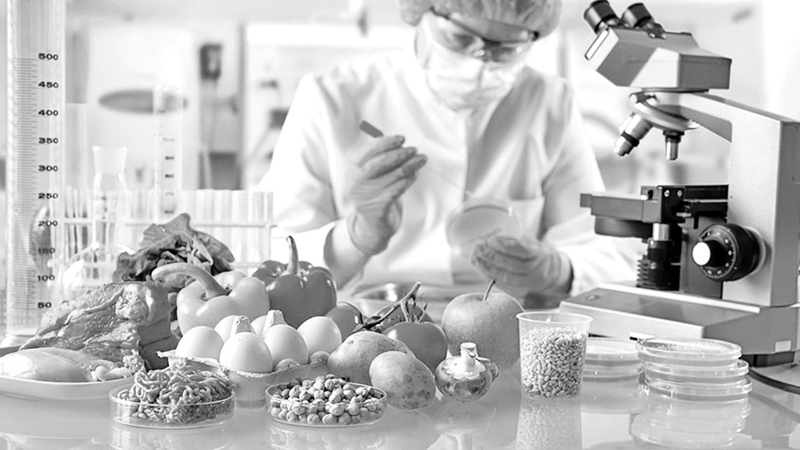Not everything that looks good on a plate is safe. A ripe tomato may carry invisible bacteria. A slice of meat, if handled poorly, can turn into a breeding ground for disease. Food safety isn’t something we think about every day. But it should be. Because the truth is, what we eat and how it’s prepared has a direct line to our health, sometimes in ways we only realise when it’s too late.
World Food Safety Day, marked every year on June 7, is not just another entry in the calendar. It’s a wake-up call. The idea behind it is to remind Governments, producers and everyday people that food safety is everyone’s business. By 2026, while the official theme has yet to be released, recent patterns suggest a continued emphasis on shared responsibility, science-driven food systems and prevention. These themes reflect a growing realisation: as global food supply chains expand, so do the risks. The more steps there are between farm and plate, the more opportunities there are for contamination to sneak in.
Why does this matter? Because unsafe food makes people sick. According to the World Health Organization, more than 600 million people fall ill every year due to foodborne diseases. That’s almost 1 in 10 people globally. Children under five bear 40 percent of the foodborne disease burden. Infections such as salmonella, listeria and E. coli are more than just names in textbooks. They lead to real suffering, and in severe cases, death. Something as simple as eating undercooked eggs or using the same cutting board for raw meat and vegetables can have serious consequences.
The burden of foodborne illness goes far beyond the hospital bed. It leaves deep economic scars. The World Bank estimates that unsafe food costs low- and middle-income economies over $110 billion a year in productivity losses and medical expenses. That’s money that could be spent on schools, infrastructure, or public health. When large outbreaks occur, they can decimate businesses. Restaurants close. Exports are banned. Farmers lose markets. Entire supply chains collapse. For families living on the edge, one round of food poisoning can push them further into poverty.
Food safety, not a luxury
All of this makes one thing clear: food safety is not a luxury. It’s a necessity. And one of the most powerful ways to ensure it begins at home. Cooking your own meals gives you control. You know if your spinach was washed. You can see whether the chicken is cooked through. You’re the one deciding on how much salt or oil goes in. More importantly, you reduce the number of unknowns in your meal. There’s no wondering how long it sat out, or whether the oil has been reused ten times. Modern life doesn’t always make room for home-cooked meals. People are working longer hours. Urban living often means tiny kitchens or no kitchens at all. Eating out or buying prepared food becomes a necessity.
This is where awareness and caution step in. Not all food outlets are created equal. A place that cuts corners on hygiene to save money puts every customer at risk. Look for signs: are the food handlers wearing gloves? Is the workspace clean? Is hot food kept hot and cold food cold? Are ingredients stored properly? Even the way staff handle payments and food simultaneously can be telling.
Street food
 In many countries, street food plays a central role in daily life. It’s affordable, accessible and often delicious. It also carries risk if not regulated. Local Governments have a responsibility here, not to shut down street vendors, but to support them with training, inspections and infrastructure like access to clean water. Consumers can also help by supporting vendors who prioritise hygiene.
In many countries, street food plays a central role in daily life. It’s affordable, accessible and often delicious. It also carries risk if not regulated. Local Governments have a responsibility here, not to shut down street vendors, but to support them with training, inspections and infrastructure like access to clean water. Consumers can also help by supporting vendors who prioritise hygiene.
Beyond safety, there’s another side to food that deserves attention: its culture. Food is not just sustenance. It’s identity, history, memory. A bowl of pho tells a story of Vietnam. A biryani speaks of centuries of spice trade and migration. Family recipes passed down through generations carry with them the fingerprints of time and love. The way we cook and eat binds us to our roots. Even as globalisation introduces us to new dishes, our cultural connection to food remains strong.
Traditional methods
This cultural beauty makes the case for safety even stronger. Because food that harms cannot be celebrated.
A dish that makes someone sick loses its joy. To preserve the richness of our food cultures, we need to ensure that they are practised safely. Traditional methods often carry wisdom. Fermentation, slow cooking, drying are good examples. These methods evolved not just for flavour but for preservation and safety. Relearning and respecting them can bring both health and cultural pride.
As we look to the future, the importance of food safety will only grow. Climate change, urbanisation and population growth, all place new pressures on how we produce and consume food. New pathogens are emerging. Old ones are becoming more resistant. In this context, global cooperation becomes essential. Governments must enforce safety standards. Scientists must continue research into detection and prevention. Food companies must be transparent about sourcing and processing. But at the core, people must stay informed and cautious. World Food Safety Day is a reminder, not a ritual.
It doesn’t end on June 8. It carries into every meal, every choice. Whether you’re chopping onions in your kitchen, grabbing a sandwich from a stall, or ordering dinner online, you have a role to play. Safety isn’t about fear. It’s about care for yourself, your family and your community. Food should nourish, comfort and connect. It should never harm. And that is why food safety matters.
Food Safety Day 2025
Food Safety: Science in Action
This year, World Food Safety Day 2025 focused on the power of science with the theme ‘Food Safety: Science in Action.’ Celebrated every June 7, the day calls attention to how science underpins every step of the food chain—from soil to supermarket shelves and finally, to our kitchens.
Scientific advances have transformed food safety: from detecting harmful bacteria in seconds to improving how food is stored and transported. But this theme goes beyond laboratories. It’s a reminder that everyday food decisions such as washing produce, storing leftovers properly and cooking meat to safe temperatures are also science in action.
The Food and Agriculture Organization (FAO) and the World Health Organization (WHO) call upon Governments, industries, and people to use evidence-based practices to reduce risk. Strong policies, clean kitchens, transparent supply chains—all stem from scientific insight.
This year’s theme also highlights that food safety isn’t static. As climate change, urbanisation and global trade evolve, so must our tools and understanding. And while innovation drives change, awareness keeps it grounded. Safe food isn’t just a result of science—it’s the product of putting that science to work in our homes, markets and communities every single day.




